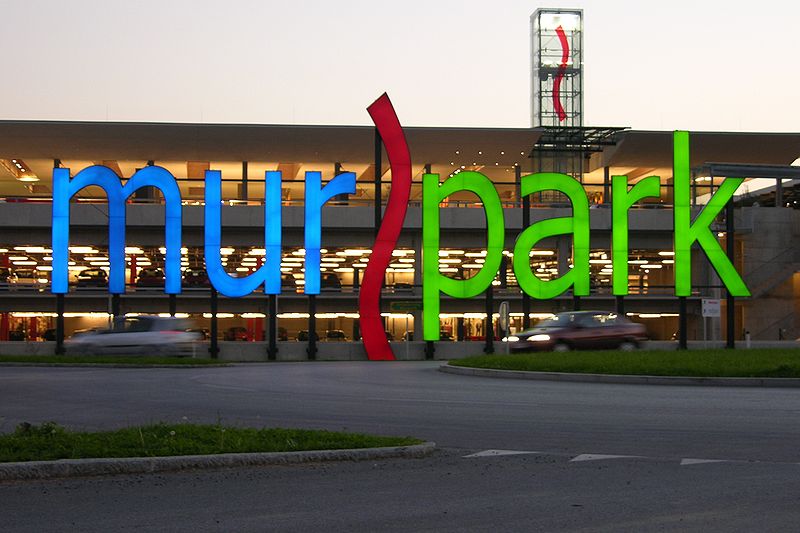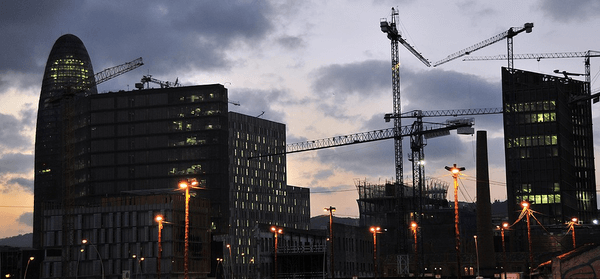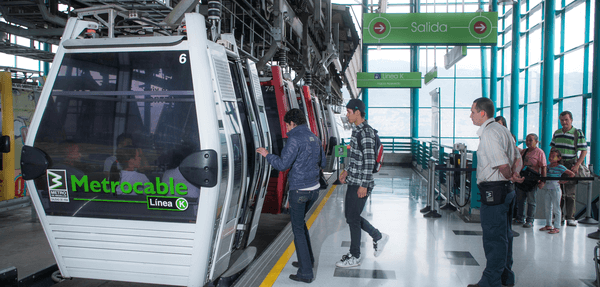Guaranteeing a successful private-public-partnership project, the implementation phase was connected to a mobility program from the very beginning. Within the mobility program the main emphasis was set on the public transport system as the most important part of the project. Customers of the Murpark shopping mall are now able to park their vehicle for a fee of 5 Euro for 24 hrs. Besides the whole day parking, this special ticket also includes a one-day ticket for the entire public transport system of Graz. Customers can get a monthly ticket with the same conditions for 39 Euro. The Murpark shopping mall is the first example of connecting a shopping centre with the public transport system successfully.
To connect the integrated traffic planning with the shopping centre a number of issues required particular attention
- rebuilding and extending the already existing Interspar supermarket
- new construction of two buildings with stockist functions
- open air and underground car park and other parking spaces for approx. 2.200 cars
- public Park & Ride facility for approx. 500 cars
- street link to the motorway approach road A2Z (Graz-Ost; Graz-East)
- extending the tramlines 4 and 13
- beautifying and restoring the Petersbach creek.
Together with the Park & Ride facility, the connection to the motorway and the extension of tramline 4 relieves the traffic load in Southeast Graz, and at the same time is essential for the development of the whole region. The connections to the regional traffic network and the municipal and local transport system have been ensured by the following steps of action:
For a direct connection to the motorway, the northern part of the motorway A2Z had to be assigned from the ASFINAG (Autobahnen- und Schnellstraßen-Finanzierungs-Aktiengesellschaft) into the municipality’s area of responsibility. The city of Graz established a new intersection at the end of the Süd-Autobahn (South-Motorway) called “Liebenauer Tangente” (bypass of Liebenau).
The extension of the tramlines 4 and 13 developed the centre of the district Liebenau as a local traffic hub. Moreover, the bus lines 64, 74, and 75 received new end stations at the Murpark shopping centre, where six additional region bus lines also stop for intra-urban and long distance traffic.
The investor SES contracted ATP architects and engineers from Vienna for the construction of the Murpark. ATP began building in March 2005 and finished the shopping centre in March 2007. The cost of the total reconstruction and construction process amounted to 85 million Euros.
During the complete process of the project Murpark SES collaborated with several external stakeholders. ÖBB (Austrian Federal Railways), (private) national traffic companies (bus lines) and the municipality of Graz were the most important stakeholders and participants in the project. All phases of implementation predominantly required several instruments of cooperation in spatial planning, city development, and mobility management.



